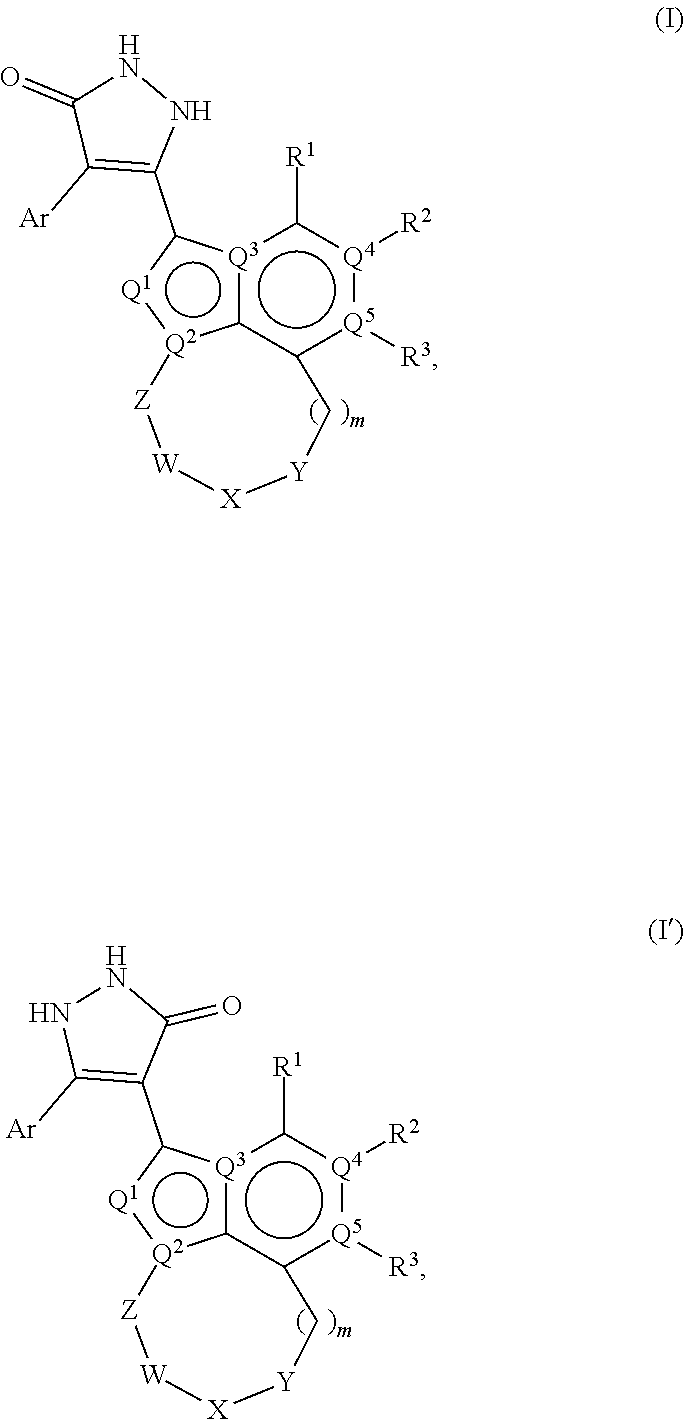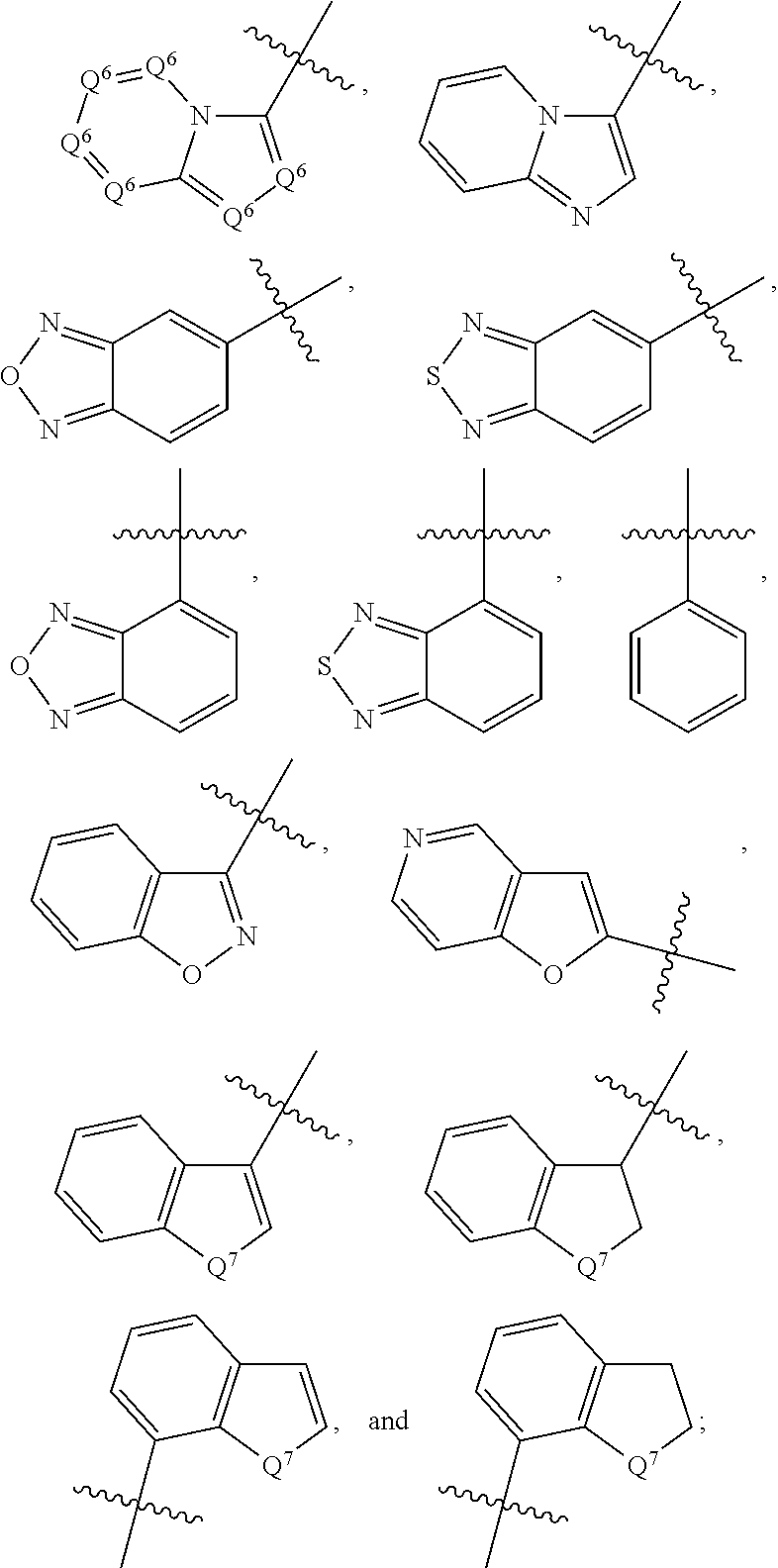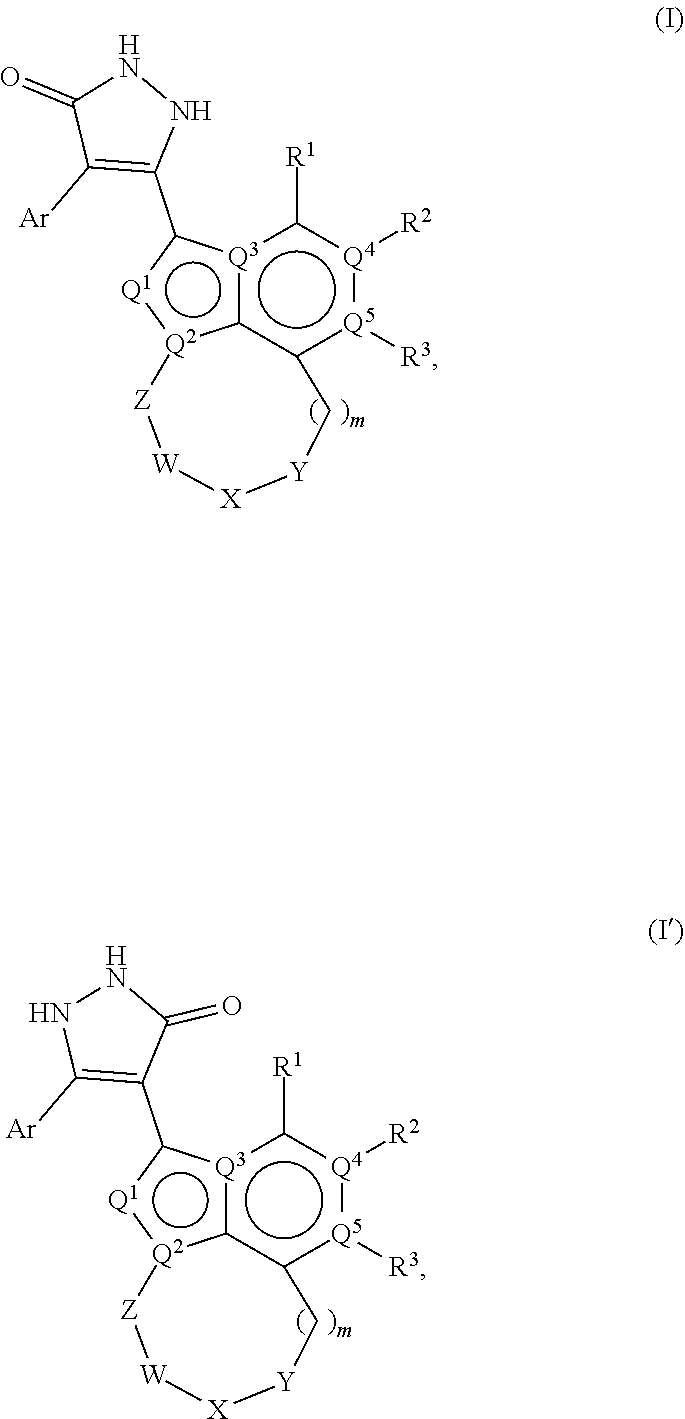1,2-dihydro-3h-pyrazol-3-one compounds and methods of using same
a technology of dihydro-3h-pyrazol and compounds, applied in the field of 1, 2dihydro-3hpyrazol3one compounds, can solve the problems of increased hair cell numbers, difficulty in maintaining tissue homeostasis, and increased hair cell numbers
- Summary
- Abstract
- Description
- Claims
- Application Information
AI Technical Summary
Benefits of technology
Problems solved by technology
Method used
Image
Examples
example 1
Synthesis of Compound No. I-4
[0341]
[0342]Synthesis of intermediate 16. To a solution of intermediate 15 (100 g, 0.59 mol) in dry toluene (890 mL) was added n-BuOH (131.6 g, 1.78 mol) and TsOH (10 g) at room temperature. The mixture was stirred at 120° C. overnight and the water removed using a Dean-stark apparatus. The mixture was concentrated in vacuum to give crude intermediate 16. The crude intermediate 16 was purified by flash column chromatography (eluted with petroleum ether / EtOAc from 100:1 to 20:1) to give intermediate 16 (120 g, 67.8%) as a yellow oil. 1H NMR (CDCl3, 400 MHz): δ (ppm) 7.89-7.92 (dd, 1H, J=4.8 Hz, 8.8 Hz), 7.51-7.54 (dd, 1H, J=2.8 Hz, 9.6 Hz), 7.09-7.14 (m, 1H), 6.04 (s, 1H), 3.50-3.56 (m, 4H), 1.55-1.62 (m, 4H), 1.33-1.42 (m, 4H), 0.83-0.93 (m, 6H).
[0343]Synthesis of intermediate 17. To a solution of intermediate 16 (50 g, 0.17 mol) in dry THF (1500 mL) was added vinyl magnesium bromide solution (1 M, 668.8 mL, 668.8 mmol) drop wise at −40° C. The mixture w...
example 2
Synthesis of Compound No. I-52
[0352]
[0353]Synthesis of intermediate 25. To a solution of intermediate 22 (3.0 g, 10.0 mmol) in dichloromethane (90 ml) was added oxalyl dichloride (1.5 g, 12.0 mmol) at 0° C. under N2. The mixture was stirred at 0° C. for 2 hrs. The mixture was cooled to −78° C. and NaOMe (1.2 g, 22.0 mmol) in MeOH (15 ml) was added dropwise. The mixture was stirred at room temperature for 1 hour. The mixture was poured into ice-water and extracted with dichloromethane (50 ml×2). The combined organic phases were washed with water, brine, dried over Na2SO4 and concentrated in vacuum. The residue was purified by flash column chromatography to give intermediate 25 (3.0 g, 76.9%) as white solid. 1H NMR (CDCl3, 400 MHz): δ (ppm) 8.39 (d, 1H, J=1.2 Hz), 8.06 (d, 1H, J=8.8 Hz), 6.89 (d, 1H, J=8.8 Hz), 4.69 (s, 2H), 4.39˜4.41 (m, 2H), 4.01˜4.03 (m, 2H), 3.95 (s, 3H), 3.16˜3.18 (m, 4H), 1.59˜1.63 (m, 6H).
[0354]Synthesis of intermediate 26. To a mixture of intermediate 25 (3.0 ...
example 3
Biological Activity of Compounds of the Present Disclosure
[0359]Enzymatic activities of compounds of the present disclosure are tested with recombinant human GSK3 using an in vitro enzymatic assay for inhibition GSK3α and GSK3β.
[0360]Enzymes and Substrates:
Enzyme Used (ng) / AssayReactionSubstrate / ATPGSK3α130.1 mg / ml GSKtide / 10 uM ATPGSK3β130.1 mg / ml GSKtide / 10 uM ATP
Assay Conditions:
[0361]The assay was performed using Kinase-Glo Max luminescence kinase assay kit (Promega). It measures kinase activity by quantitating the amount of ATP remaining in solution following a kinase reaction. The luminescent signal from the assay is correlated with the amount of ATP present and is inversely correlated with the amount of kinase activity. The compounds were diluted in 10% DMSO) and 5 μl of the dilution was added to a 50 μl reaction so that the final concentration of DMSO is 1% in all of reactions. The enzymatic reactions were conducted at 30° C. for 40 minutes. The 50 μl reaction mixture ...
PUM
| Property | Measurement | Unit |
|---|---|---|
| Volume | aaaaa | aaaaa |
| Volume | aaaaa | aaaaa |
| Volume | aaaaa | aaaaa |
Abstract
Description
Claims
Application Information
 Login to View More
Login to View More - R&D
- Intellectual Property
- Life Sciences
- Materials
- Tech Scout
- Unparalleled Data Quality
- Higher Quality Content
- 60% Fewer Hallucinations
Browse by: Latest US Patents, China's latest patents, Technical Efficacy Thesaurus, Application Domain, Technology Topic, Popular Technical Reports.
© 2025 PatSnap. All rights reserved.Legal|Privacy policy|Modern Slavery Act Transparency Statement|Sitemap|About US| Contact US: help@patsnap.com



